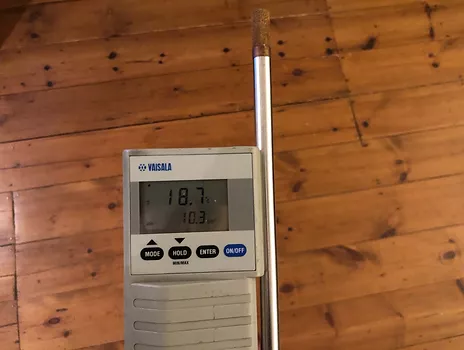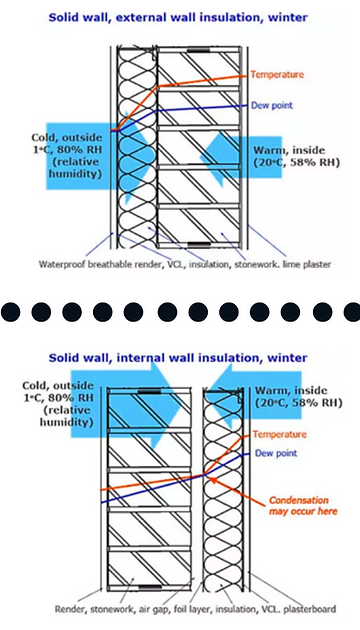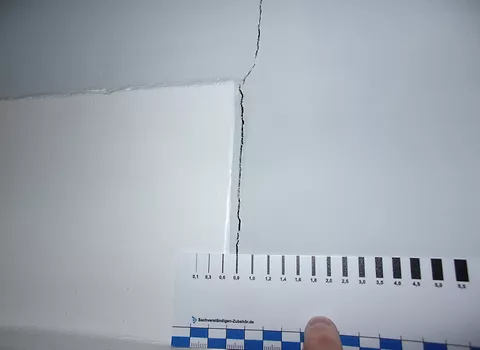Defects & Damp
Proper care and maintenance of buildings is not about covering up Defects & Damp. It is about understanding the source of the problem in order to stop it.
Timber & Damp Surveys
Blackacre have accurate inspection equipment that are used to identify the cause(s) of damp. We do not just rely on a standard resistance meter (moisture meter) like most surveyors. We take measurements throughout the building for diagnosis of the problem. From this, we advise you on the most effective means of remedy.
We undertake surveys using a range of inspection equipment. This includes thermo-hygrometer, thermal imaging camera, surface temperature probe, borescope and resistance meter.
Timber & Damp surveys are more invasive than our pre-purchase surveys.

Key Contact
Ben Salvage MRICS C.Build E MCABE
Director
Chartered Building Surveyor
Chartered Building Engineer
07515 441468
ben.salvage@blackacresurveyors.com
Unfortunately, many surveyors are not trained in Defects & Damp. When it comes to damp in particular they will only use a basic ‘moisture meter’ on their inspections. Even if the surveyor uses this properly, it only gives very little reliability as to the actual problem. It cannot confirm the presence of damp and can only confirm that damp is not present.
We use all the equipment noted above to provide information on the levels of Relative Humidity (RH %), Absolute Humidity (AH g/m3), and Dew Point (Td °C). In additional to these we can use our thermal imaging camera and borescope to understand the sources of moisture. These may be hidden from view, so our equipment provides important information.
Types of Damp
All properties will experience Defects & Damp at some point in their life. It is completely expected that moisture will try to ingress and equalize with dry elements of a property. However, if not suitably maintained and repaired, damp will cause damage to a property and its materials. In some circumstances, this can result in significant costs to repair.
Damp Penetration
This form of damp is typically caused when water ingresses a property from external sources. This might be from rain through cracks, high ground levels, flashings and weakness in the fabric. Alternatively, it could be from internal sources such as service pipe leaks penetrating through floors and ceilings.
It is essential that any source of water ingress is repaired immediately. This is important as any prolonged contact with water will cause materials to degrade. In some circumstances causing further issues which will be costly to repair. For example, the rotting of timber can, in some instances, spread to other timbers causing structural weakness and large amounts of timber to be replaced.
Condensation
Condensation occurs when a surface’s temperature drops below the ‘Dew Point’. Consequently, this means the air is no longer able to retain moisture and will instead condense onto a cold surface.
An example of this would be a room with a reasonable temperature of 20°C but high Relative Humidity of 80%. At these conditions the Dew Point is 16.4°C, meaning any surface below that temperature is susceptible to condensation. This typically happens with a traditional solid wall, and if this is prolonged, discoloration and mould will appear.
When Relative Humidity is high, the best way to stop condensation is to ensure proper space heating and ventilation. These will ensure stable conditions so that surfaces remain at a reasonable temperature and humidity levels are reduced.
Interstitial Condensation
Using the example above, what happens when this Dew Point temperature is reached, but not on an internal surface, but within the fabric of a building? This is called interstitial condensation and typically occurs within walls and roofs.
The illustrations (shown here) are useful Dew Point profiles of a solid wall with external insulation and a solid wall with internal insulation, that clearly show the principal of interstitial condensation.
As air and water vapour naturally diffuse through the wall, its temperature will cool, causing the relative humidity to rise. This can result in the Dew Point being reached and condensation occurring within the wall.
This can be problematic for a number of reasons, not least that wet walls are less thermally efficient and will loose heat faster. It can also result in freeze/expand action which will ‘spall’ the brick face.
Cavity Walls
There are particular concerns surrounding cavity wall insulation which is packed into the cavity, preventing any ventilation. When condensation occurs to the internal face of a cavity, it relies on ventilation to omit the vapour. Otherwise there will be a build up of moisture which can cause major damage such as corrosion of wall ties and delamination of the brickwork.

Ground Moisture (Rising Damp)
For many decades there has been a lot of hype surrounding Rising Damp, which also seems to be championed by ‘Damp Proofing specialists’, that ground moisture absorption at the base of a wall, ‘wicks’ up the masonry and causes damp discolouration and salt deposits to internal surfaces. These companies have an interest in selling expensive and destructive damp proofing remedies, such as chemical damp proofing injections and will often charge you to remedy a problem that isn’t there.
In recent years, more investigation into the subject has been done. From our experience the reality of ‘Rising Damp’ is that it rarely occurs and is commonly misdiagnosed, even by qualified surveyors. Research indicates that the upward movement of moisture through a wall against gravity is unlikely and only in rare and unique circumstances, like excessive ground moisture from a leak for example, would this actually occur.
Our take on Rising Damp
At Blackacre we view the situation as a whole when diagnosing damp. We would rather follow the science and our own professional experience, which indicates that virtually all cases of ‘Rising Damp’ are caused by something else such as, high exterior ground levels or internal vapour condensing onto a cold solid wall for example.
Cracking
All properties experience a degree of movement over their lifetime, some more than others and some more serious. Whether it be an older period building or a newer property, cracking can occur for a multitude of reasons. Poor foundations, ground conditions, leaking drains or even new plasterwork can be a cause of cracking.
Blackacre take a holistic approach to building cracking and consider all factors that could be an influence. We always deal with the problems in a practical manner and ensure the client is aware of the level of risk and best route forward.
Our surveyors are well read in structure and defects to buildings. We take research from the Building Research Establishment and use their guides to provide educated assessments.
